
Wait, what exactly is going on at Fundacion Paraguaya? Why are they not just making loans? Have I found the "journalistic" Holy Grail and uncovered Something Scandalous?
The Short Answer: (1) No, I haven’t uncovered anything scandalous and (2) they do more than make loans because, quite simply, it is helpful to the people whom they serve!
Important Context: I am a wet-behind-the-ears Microfinance Guy who undoubtedly still sees things as being much simpler than they really are. #Kiva
Now The Long Answer: As I climb the Development / Microfinance learning curve, I’ve observed some variation in the approaches to poverty alleviation taken by various Microfinance Institutions (MFIs). Among the differences I’ve observed, some MFIs focus on lending while others present their clients with a broader array of services.
I’ve also learned that one of the criticisms of microfinance is that borrowers often may lack some of the “hard” business management skills required to maximize the impact of their loan and build the most successful business they can. This resonates with me and, as a result, the MFIs that really pique my interest are the ones which not only make loans but also provide educational support that should enable borrowers to make savvier use of the funds and improve their business’ success.
Again acknowledging that I am a metaphorical teenager who sees things more simply than they truly are, it seems that at least one good acid test of how ambitious an MFI is about alleviating poverty would be the extent to which it strives to provide – directly, or by coordinating with other organization(s) – a broader array of support resources that include some form of entrepreneurial/business education.
Fundacion Paraguaya, a pioneering MFI with which I have been lucky to be allied during my Fellowship, falls squarely into the category of offering such support and thus passes that acid test with flying colors. Their portfolio includes three major elements:
- A traditional Microfinance Program aimed at smaller microentrepreneurs who are generally neglected by other microfinance institutions.
- An entrepreneurship education program for children, youth and adults which, among other things, includes the a variety of Junior Achievement programs.
- A financially self-sufficient and award-winning agricultural high school, which teaches organic agriculture and entrepreneurial skills to low-income youth from rural areas, transforming them from poor campesinos into rural entrepreneurs.
Following a recent visit to the agricultural high school (Escuela Agrícola San Francisco) in Cerrito, an hour’s drive northwest of Asuncion, I came away with my bias intact and supremely impressed by its students, programs, facilities, and guiding principles.
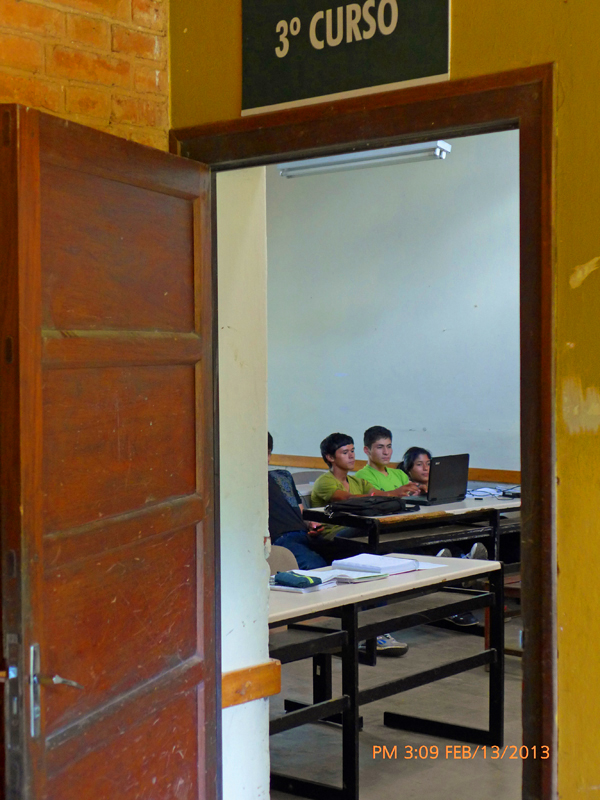
The school’s director explained to me that the overarching goal is to provide young boys and girls from rural areas with a clear awareness of the possible plus the skills, and the opportunity to grow from “campesinos pobres” (poor country-folk) to “emprendedores rurales” (rural entrepreneurs). The ultimate objective is to engender in students a strong sense of self-worth and provide the skills required to improve their prospects for a more independent and financially secure life.
In order to achieve these goals, the school’s three-year curriculum is built around the idea of learning by doing and structured such that students all rotate through the various subject matter areas balancing classroom time with time spent, literally, in the field (or barnyard) applying what they’ve been learning in the classroom.
 Out of a huge litter, these guys scored the choice spot on top of their mother.
Out of a huge litter, these guys scored the choice spot on top of their mother. This young lady was not pleased when she realized my tour guide didn't actually intend to milk her!
This young lady was not pleased when she realized my tour guide didn't actually intend to milk her!In a surprising twist, the school also operates an on-site hotel and conference center, so the students have a non-agricultural option.
Going into their third and final year, students choose an area of the curriculum in which to concentrate for the remainder of their time in school. At the same time, they are given supervisory responsibility within their chosen area of specialization.
 Artwork seen in the conference center and around the campus reflects the campus' Lasalle Brotherhood history.
Artwork seen in the conference center and around the campus reflects the campus' Lasalle Brotherhood history.
In the interest of “keeping it real” and ensuring that students don’t graduate with an unduly cloistered Ivory Tower biased view of the world, the curriculum is oriented towards the needs of the employment market. Regardless of their “major,” all of the school’s graduates earn dual certificates in Agricultural Sciences and Tourism/Hospitality, which is unique in Paraguay.
Perhaps most “real” of all, a graduation prerequisite is that each student must present a “final thesis” in the form of a business plan which they will have refined with input from faculty coaches. Once the business plan has received faculty approval, students qualify for a line of credit from the Fundacion Paraguaya if/when they choose to implement their plan.
Attesting to the program’s effectiveness is the dramatic contrast that I observed between shy and hesitant First-year students and the vastly more outgoing, confident, and optimistic Third-year students. Also part of the transformation from First to Third-year is an obvious sense of pride in their accomplishments, growth in responsibility, and subject-matter expertise.
Moving from anecdotal to quantitative validation of the school’s effectiveness are the following factoids:
- 100% of the school’s graduates currently work in the agriculture / livestock / tourism / hospitality business, are continuing their studies and/or have started their own micro-enterprise.
- The school is 100% financially self-sustaining: 2011 was the fifth consecutive year in which the school’s income covered its complete budget. The 2012 audit has not yet been completed, but the streak is likely to have lasted a sixth consecutive year.
- It’s worth noting that students pay only a symbolic tuition of $20 per month and are able to work off the bulk of it through their activities on the farm and through selling the farm’s goods in nearby markets as well as in Asuncion.
In its quest to remain self-sufficient, the school doesn’t hesitate to explore cost-saving technologies as well as potential new revenue streams. On the cost saving side they employ solar water heaters, capture cooking gas from manure, have experimented with solar cooking, and use a small steam plant to power their dairy. On the revenue side, they are experimenting with pisciculture (Tilapia), apiculture (bees/honey), and even vermicomposting (worm-assisted composting).
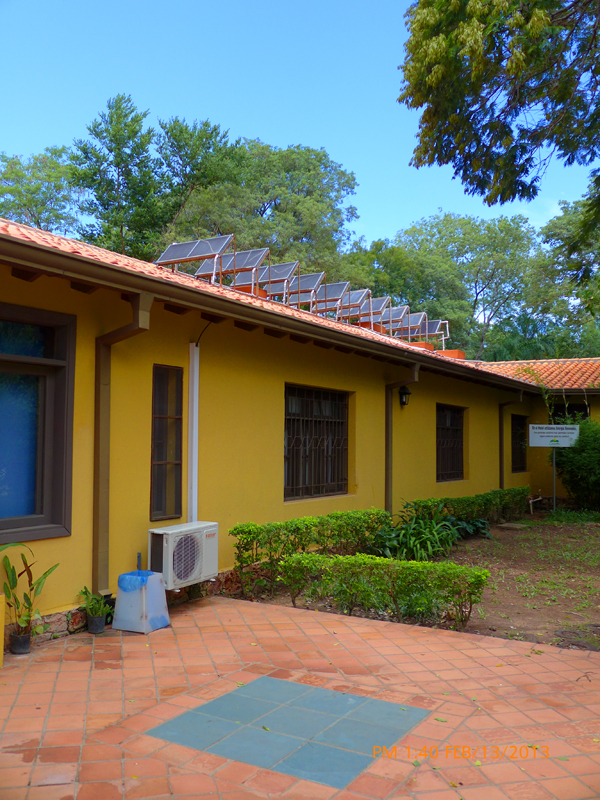 Solar water heating panels on the roof
Solar water heating panels on the roof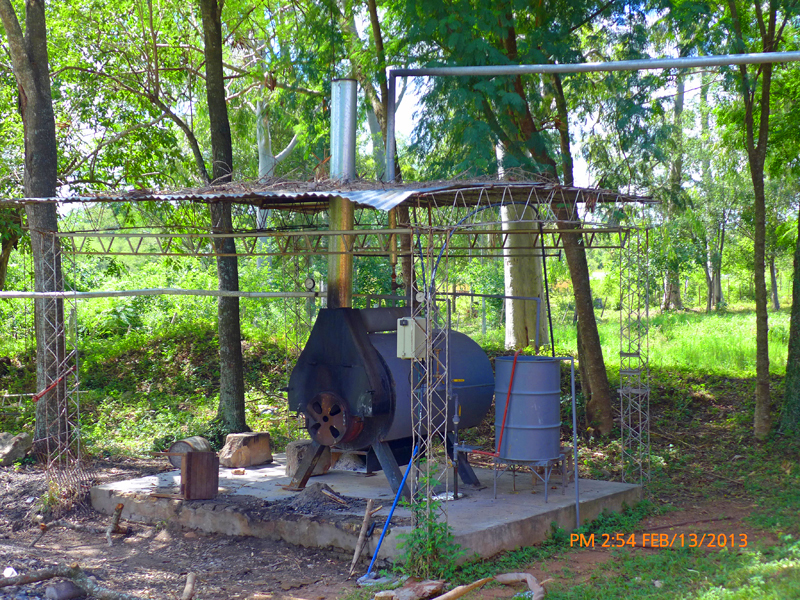 A steam plant powers the dairy and, in Winter, heats the dorms.
A steam plant powers the dairy and, in Winter, heats the dorms.At this point, dear reader, you may be thinking to yourself, "Okay, that's great! But, so what?"
Well, to bring this virtual tiptoe through the tulips to a conclusion, the moral of the story is that sticking to one’s knitting may not be the best advice in all situations. While it may be the safer/easier route to take, building on the foundation of one’s knitting in order to provide support in a more holistic manner -- such as the Fundacion Paraguaya does -- appears to me a more effective path to alleviating poverty.
I hope you will encourage your favorite microfinance institutions to explore and seize opportunities to broaden their array of offerings in order to better serve their constituency from cradle to grave. (How’s that for packing a couple of paragraphs with a messy mixture o’ metaphors, trite sayings, business jargon …and alliteration?!)
Hasta pronto from Paraguay!
A COUPLE OF BONUS PICTURES FOLLOW:
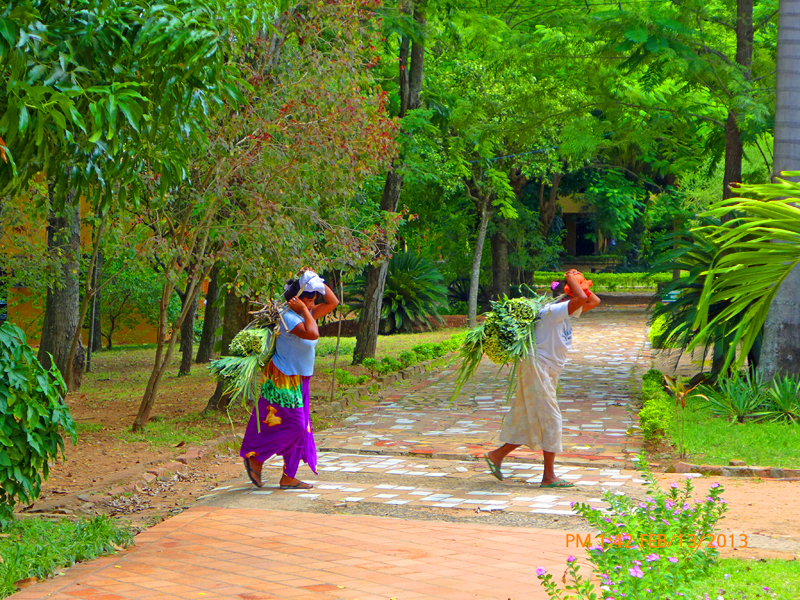 Ladies from a nearby village of indigenous Guarani people.
Ladies from a nearby village of indigenous Guarani people.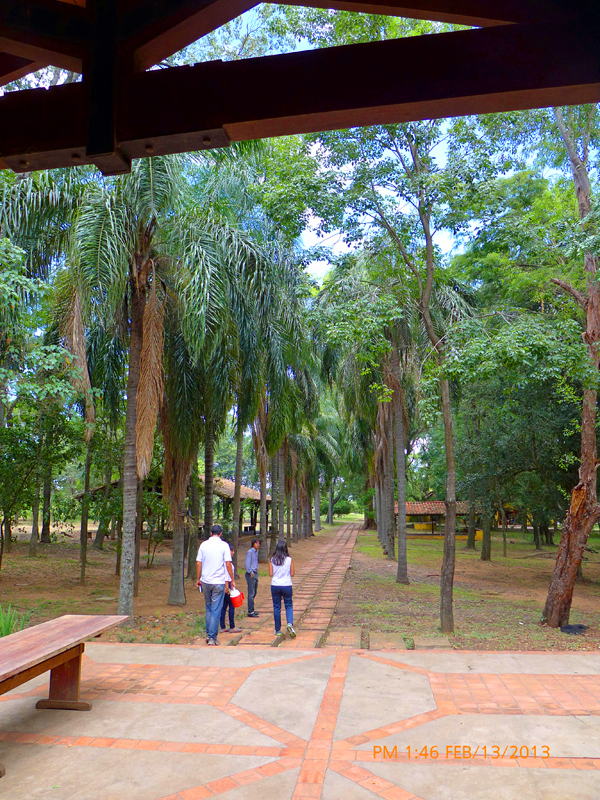 A pretty tree shaded path
A pretty tree shaded pathPREVIOUS ARTICLE
Newest Field Partner: Kiva re-enters in Nigeria to help increase crop yields with Babban Gona →NEXT ARTICLE
A deep dive into lending team design changes →













